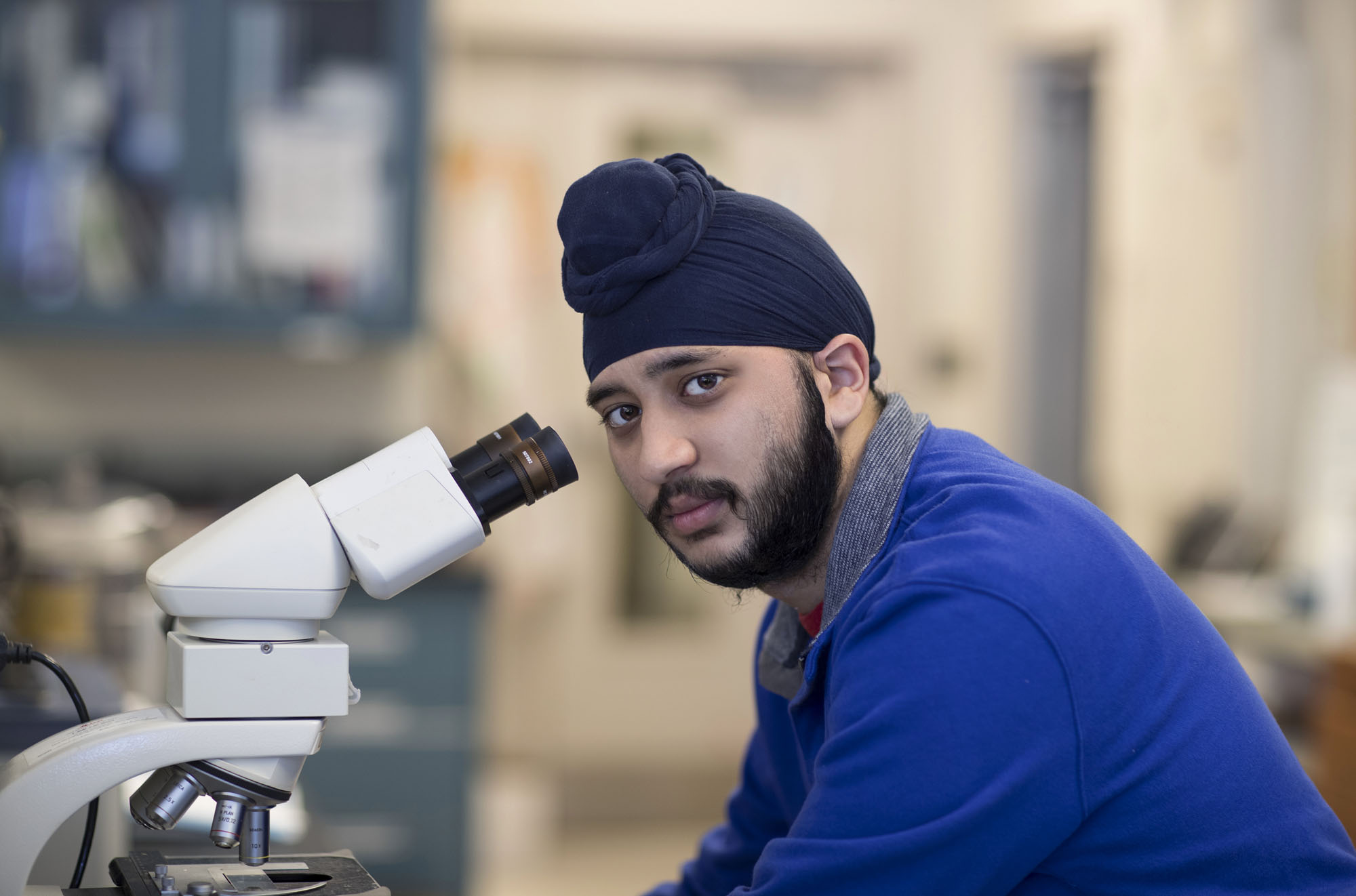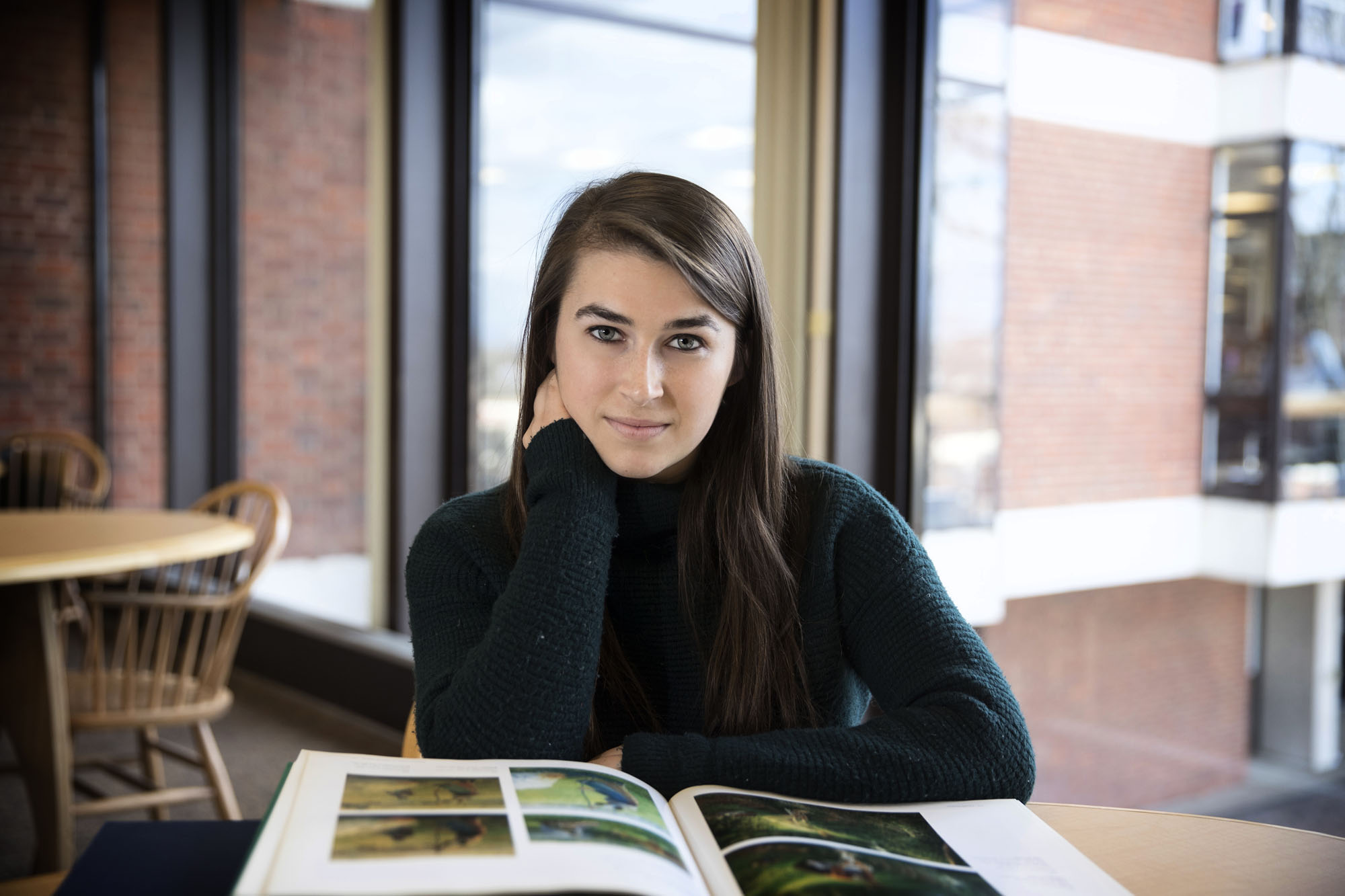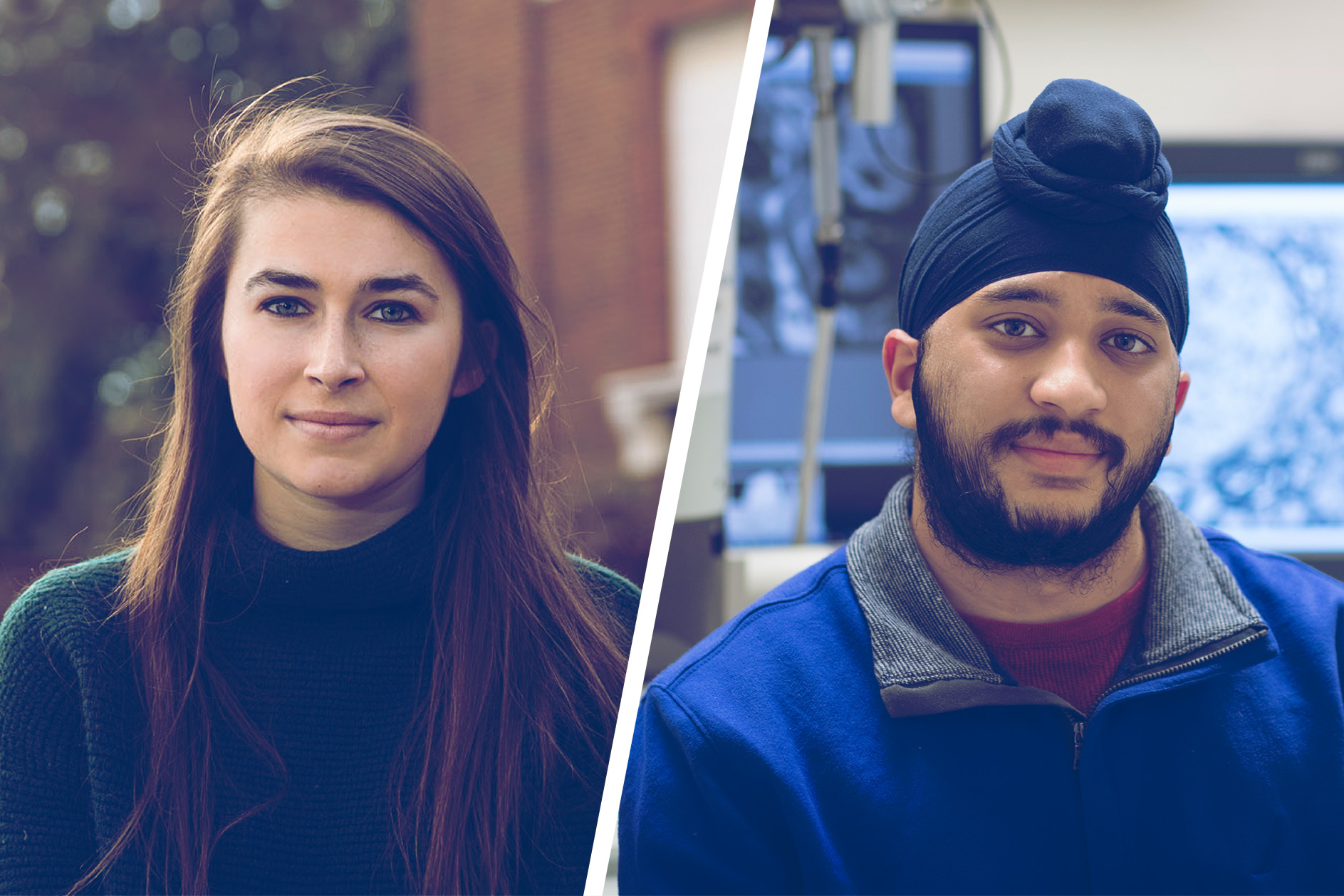Editor’s note: Second of a two-part series profiling the work of a few of the winners of the 2016 Harrison Undergraduate Research Awards.
Research is a cornerstone of the undergraduate student experience at the University of Virginia, with about 54 percent of graduating fourth-year students indicating that they had completed a significant research, design or creative project as part of their undergraduate program of study.
As further encouragement, the University annually offers Harrison Undergraduate Research Awards, giving students opportunities to pursue faculty-mentored projects over the summer with up to $3,000 to cover their expenses. The University has announced 47 grants for 49 students in this year’s round.
The students’ research manifests itself in many ways and in many different fields, as they explore the world around them. Here’s a look at two of the projects that flowed from the last round of Harrison grants.
Probing Mouse Brains for Alzheimer’s
Sahil Chawla of Chantilly is probing the early stages of Alzheimer’s disease.
Chawla, a fourth-year neuroscience major, is examining specifically what happens in the brains of mice that model Alzheimer’s disease during its early stages, when classical pathological signs are not obvious. He performed his research in the lab of Alev Erisir, chair of the psychology department.

Sahil Chawla, a fourth-year neuroscience major, is a past recipient of the Harrison undergraduate research grants.
“We set out to understand what caused these cognitive deficits prior to the traditional markers for Alzheimer’s disease revealing themselves in the brain,” Chawla said. “I have learned so much about the subject – not only the behavioral and cognitive deficits that people with Alzheimer’s face, but from a biological perspective, I have gained an appreciation for the complexities of the disease from it being an inheritable disease to a disease that can be a result of concussions and head trauma in sports.”
Chawla’s first experience with Alzheimer’s disease was volunteering at a care facility for Alzheimer’s patients while he was a high school student. “I was shocked how individuals could lose their identity right before your eyes due to Alzheimer’s disease,” he said.
Erisir said Chawla is one of the best undergraduate research assistants she has had in her lab.
“He is smart, hard-working, creative and he doesn’t shy away from taking responsibilities,” Erisir said. “He has been in my lab for a year and half, and during that time he produced more data and presented more posters than most graduate students during their first year.”
Chawla has presented two posters at local and national neuroscience meetings, receiving a Best Student Presentation award at one, and he will be co-author on a manuscript that includes his work.
“He spends a lot of time examining electron microscopy images, and designing ways to measure and analyze different features in the white matter of the brain,” Erisir said. “He is an active participant in lab meetings and more than once his ideas shaped the direction of discussions. Sahil is a joy to work with.”
Chawla said while they are targeting a symptom of Alzheimer’s disease that is not often examined, it is difficult to predict how this work will affect the bigger picture of Alzheimer’s disease.
“Having learned so much about the subject, I have really gained an appreciation for all of the research that is being conducted at world-class institutes like the [National Institutes of Health],” Chawla said. “Coming up with a research question and following through with experiments is an arduous process that sometimes does not yield fruitful results, and I admire researchers all over the world who continue to push past setbacks and failures and dedicate their lives to solving the medical problems of the world.”
Chawla plans to take a gap year after graduating in May before applying to medical school, specializing in neurology.
“This research has certainly opened my eyes to applying to more research positions during my gap year and contemplating a possible Ph.D. program,” Chawla said. “While sometimes frustrating, I think that if you are really passionate about the subject you research, the feeling of an experiment running correctly or making a new finding certainly makes up for it.”
A New Impression of Camille Pissarro
Emily Cox of Fairfax, a graduating third-year art history major, is breaking new ground with her research into the French impressionist artist Camille Pissarro.
Cox said her thesis, “An Anarchist in the Shadows: Camille Pissarro and Modes of Transnational Syndication,” explores light and liminal spaces as keys to understanding the politics of Camille Pissarro’s two nighttime scenes: “Les Turpitudes Sociale” (1889), a collection of pen and ink drawings showing what Pissarro thought were the horrors of the capitalist society; and “The Boulevard Montmartre at Night” (1897), a Paris street scene.

Emily Cox used her undergraduate research award to study Camille Pissarro's art.
“It also deals with what I argue are the ties between Pissarro’s ‘Turpitudes Sociales’ and William Morris’ ‘News from Nowhere’ (1890), looking at how British socialism and French anarchism may have actually been in direct dialogue by virtue of these two artists’ serial projects of December 1889,” Cox said.
Cox was drawn to Pissarro’s work because of what she saw as “a dearth of scholarship on Pissarro’s nighttime scenes, which happen to also comprise the artist’s major urban projects.” Pissarro was painting in a time that saw a major renovation of Paris under Emperor Napoleon III and Georges-Eugène Haussmann, which introduced innovative street lighting, boulevards and commercial centers and which redefined the boundaries of public and private spaces.
“The overhaul of Paris also quite literally shed light on the seedy underbelly of the city – its large, impoverished population,” Cox said. “Pissarro’s ‘Turpitudes Sociales’ is a little-known set of 28 drawings, now housed in a private collection in Geneva, which I visited in conjunction with my Harrison grant. I argue that Pissarro, drawing inspiration from Paris’ new street lamps, manipulated sections of light and dark in this graphic work in order to illuminate the social degradations of Paris, thereby furthering his anarchist project.”

Cox said the connection between Pissarro and Morris was a major discovery that sparks a larger debate about the transnational networks of radical art and politics in fin-de-siècle Europe.
“It raises the question of how French artists such as the Impressionists looked beyond the confines of their country to other thinkers, among them major Russian philosophers and writers such as Tolstoy and Kropotkin, to navigate the anarchist/aesthetic debates of the late 19th century,” Cox said. “Thus far, these cross-cultural exchanges have been underexplored in art historical scholarship.
“My research advocates for an interdisciplinary, cross-cultural mode of investigation, one which breaks through the rather stale construction of a pure, Paris-based modernism and instead highlights the ways in which we should look at modernism as being born out of a series of transnational exchanges.”
Cox will pursue a Ph.D. in art history, and she wants to explore “the implications of transnational political movements that brought together London, Paris and St. Petersburg in the late 1880s and 1890s. I will bring together artists, writers and philosophers of diverse European nationalities – men such as Tolstoy, Zola, Kropotkin, Pissarro and Morris – to stake out how these profound, but largely unexplored international connections between art, literature and politics drove early modernism.”
Sarah Betzer, associate professor of art history and Cox’s adviser in her distinguished majors program thesis, said Cox capitalized on research in the Pissarro family archives in Oxford, in the United Kingdom, publishing an exhibition catalogue essay for a show that opened at the Musée Pissarro in Pontoise in January 2016, “Les Pissarro: Une Famille d’Artistes.”
“Emily Cox is tremendously talented and motivated, nothing short of a force of nature,” Betzer said. “Emily has already made a number of extremely exciting discoveries, and I predict that her undergraduate thesis is likely to hold the seeds of a potentially game-changing interpretation of ‘Les Turpitudes Sociales (1889).’ A student of unmatched energy and drive, Emily is among the most determined, accomplished and promising undergraduates with whom I have had the pleasure of working.”
An Echols Scholar, Cox has received a Fulbright Summer Scholarship, a Lindner Center Fellowship for Art History, an Ingrassia Family Echols Scholars Research Grant, a Summer Ethics Internship Award and a Double ’Hoo Research Grant. The Musée Pissarro published her article, “A Woman Empowered: Julie Pissarro and the Purchase of the Éragny House.” She has been managing editor of the Undergraduate Law Review, a Madison House volunteer, a member of the Raven Society and co-founder of Thursdays Magazine.
Media Contact
Article Information
February 24, 2017
/content/undergraduate-researchers-probe-alzheimers-mice-and-impressionism

